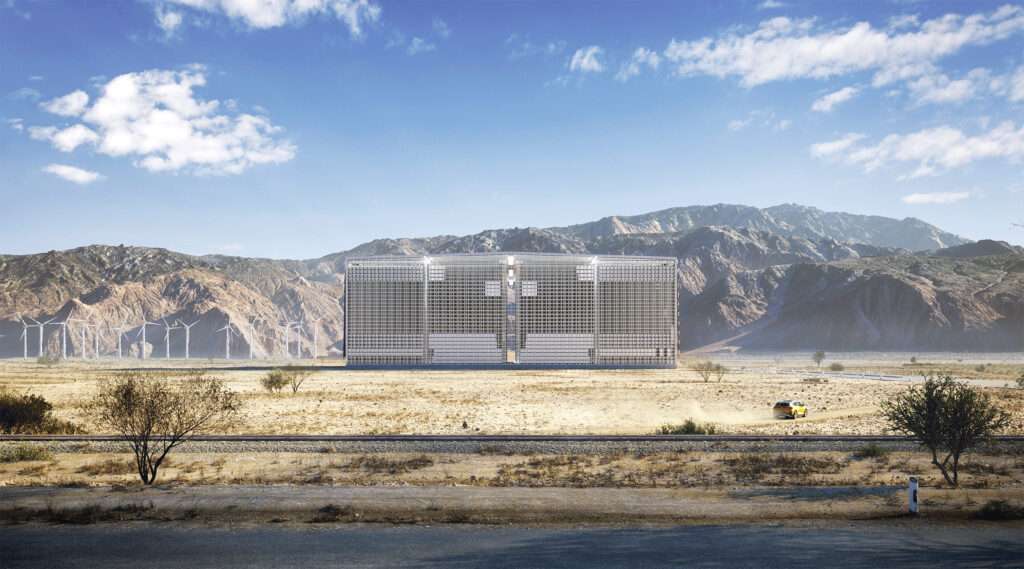Rendering of Energy Vault EVx energy storage system concept. Image: Energy Vault.
NTPC, a state-owned power producer and utility company in India, has signed a Memorandum of Understanding (MoU) with Energy Vault, the startup seeking to commercialise a novel energy storage technology.
Swiss-American company Energy Vault is developing a gravity-based energy storage system (ESS) that involves lifting and lowering blocks made of a concrete-like composite material that each weigh several tonnes to store and release energy.
The company has raised some serious investment money, including US$195 million private investment in public equity (PIPE) which was committed to its listing on the New York Stock Exchange (NYSE).
Energy Vault listed in February this year after a merger with special purpose acquisition company (SPAC) Novus Capital Corporation II. Investors in the PIPE included Korea Zinc and Atlas Renewable, the latter a company set up to facilitate investment and partnerships with the Chinese renewable energy and power sectors.
All this was despite Energy Vault having stated ahead of the SPAC merger that its grid-scale ESS technology was far from perfected. Although it has built one demonstration project in Switzerland to date, a complete redesign of the system has been unveiled since then.
What was originally a giant tower swinging weights suspended from cranes now looks more like a rectangular building frame filled with elevators.
Meanwhile NTPC, by some measures India’s largest power utility company with over 65GW of assets in its portfolio, said in June 2021 that it is seeking to install 1,000MWh of energy storage at the sites of its existing power generation facilities.
This was considered a fairly significant announcement given that the name NTPC originally stood for National Thermal Power Corporation and came amid growing interest in encouraging energy storage deployment – particularly from batteries – in India at both national and state government level as well as from private industry.
India is targeting the deployment of 500GW of renewable energy by 2030, with energy storage seen as a key means to support and enable that. A 1,000MWh tender for standalone energy storage was recently launched by the national Solar Energy Corporation of India (SECI), for example.
Energy Vault and NTPC have signed the MoU which will see the pair conduct a joint feasibility study of the Energy Vault EVx gravity storage technology as well as associated software solutions.
Based on the outcome of that initial collaboration, a formal long-term strategic partnership could be formed, Energy Vault said yesterday. The EVx technology’s composite weight blocks could also be made using coal ash as a component, which could offer NTPC a route to repurposing some of its power plant waste.
“As a large, integrated power producer, it is critical for NTPC to have a diverse clean energy portfolio to decarbonise India’s economy. We have enhanced our renewable capacity addition targets to spearhead India’s energy transition goals and we are focusing on solar, wind, round-the-clock renewable energy (RTC) and hybrid projects to achieve the targets,” NTPC managing director and chairman Gurdeep Singh said.
“The collaboration with Energy Vault will help NTPC in furthering its energy transition goals through a sustainable approach by way of utilising coal ash for manufacturing of composite blocks. Accordingly, this collaboration will also promote a circular economy.”
Energy Vault CEO Robert Picconi said the collaboration with NTPC builds on an ongoing strategy of global expansion for the energy storage startup. Earlier this year it claimed a 100MWh EVx project in China is set to begin construction in the second quarter of 2022.
Continue reading










